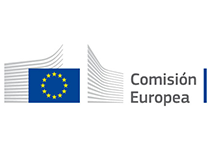
27 de Junio, 2023
08 de Noviembre, 2023
11:59 PM
Sustainable circular development and manufacturing of healthcare products and their quantitative environmental impact assessment-HORIZON-JU-IHI-2023-04-06-two-stage
Investigación
-Escuela de Medicina y Ciencias de la Salud - Escuela de Ingeniería, Ciencia y Tecnología- Facultad de Ciencias Naturales
Comisión Europea
4.500.000 EUR
The aim of this project is to avoid the accumulation or distribution of any substances of concern in nature and therefore identify new transformations that can replace stoichiometric or catalytic use of toxic reagents or catalysts, respectively.
ExpectedOutcome:
We expect all of the following outcomes to be generated from the topic.
1. Generation of novel, process-intensified manufacturing methods and unit operations according to safe and sustainable by design (SSbD).
2. According to the World Economic Forum 2022 report, the pharmaceutical industry is fuelling the climate crisis where the sector is responsible for 4.4% of global emissions and its CO2 footprint is forecast to triple by 20502. Reducing the generation of greenhouse gases (mainly CO2, methane, nitrous oxide) is a key element to preventing climate change. Any attempt to improve the efficiency and environmental compatibility of a manufacturing process under development is expected to reduce the generation of GHGs everywhere on the planet. A thorough assessment of the origins and the life cycles of all chemicals, reagents, solvents and API (active pharmaceutical ingredient) drug substances procured must be performed to have a complete cradle-to-gate analysis of the GHG generation to be measured as GHG footprint per mass/dose/treatment. All changes in manufacturing processes should include considerations of the economic impacts. This includes the development of thresholds for the recovery and reuse of solvents.
3. All aspects of process designs should be quantified in standardised assessment systems comprising as many influence factors as possible to describe the full environmental impact of a single drug product on everybody’s environment. Artificial intelligence (AI) / machine learning (ML) driven technology should help to sharpen the full picture of the environmental impacts from material supplies via manufacturing to the consumer and waste (= cradle-to-gate analysis). A publicly accessible digital toolbox will be developed that guides development chemists, biotechnologists and engineers to create the best possible manufacturing processes that produce safe and high-quality products with the minimum environmental impact possible.
4. The harmonisation of assessment systems3 across the healthcare industry is expected to be incorporated into European environmental guidelines, and standards aligned with existing standards outside the scope of the EC.
Proposal page limits and layout: described in Part B of the Application Form available in the Submission System
at stage 1 of a two-stage Call, the limit for RIA short proposals is 20 pages;
at stage 2 of a two-stage Call, the limit for RIA full proposals is 50 pages.
Documents: (Check them on the webside).
IHI JU Evaluation form for Research and Innovation Actions (single and two-stage Calls)
IHI JU Proposal template (RIA/SP) - Part B
•Colombia is eligible as a third country, for this it must participate with the role of partner together with a consortium with at least three entities from different European/associated countries).
OBJETIVO/DESCRIPCIÓN
The aim of this project is to avoid the accumulation or distribution of any substances of concern in nature and therefore identify new transformations that can replace stoichiometric or catalytic use of toxic reagents or catalysts, respectively.
REQUISITOS CLAVE
ExpectedOutcome:
We expect all of the following outcomes to be generated from the topic.
1. Generation of novel, process-intensified manufacturing methods and unit operations according to safe and sustainable by design (SSbD).
2. According to the World Economic Forum 2022 report, the pharmaceutical industry is fuelling the climate crisis where the sector is responsible for 4.4% of global emissions and its CO2 footprint is forecast to triple by 20502. Reducing the generation of greenhouse gases (mainly CO2, methane, nitrous oxide) is a key element to preventing climate change. Any attempt to improve the efficiency and environmental compatibility of a manufacturing process under development is expected to reduce the generation of GHGs everywhere on the planet. A thorough assessment of the origins and the life cycles of all chemicals, reagents, solvents and API (active pharmaceutical ingredient) drug substances procured must be performed to have a complete cradle-to-gate analysis of the GHG generation to be measured as GHG footprint per mass/dose/treatment. All changes in manufacturing processes should include considerations of the economic impacts. This includes the development of thresholds for the recovery and reuse of solvents.
3. All aspects of process designs should be quantified in standardised assessment systems comprising as many influence factors as possible to describe the full environmental impact of a single drug product on everybody’s environment. Artificial intelligence (AI) / machine learning (ML) driven technology should help to sharpen the full picture of the environmental impacts from material supplies via manufacturing to the consumer and waste (= cradle-to-gate analysis). A publicly accessible digital toolbox will be developed that guides development chemists, biotechnologists and engineers to create the best possible manufacturing processes that produce safe and high-quality products with the minimum environmental impact possible.
4. The harmonisation of assessment systems3 across the healthcare industry is expected to be incorporated into European environmental guidelines, and standards aligned with existing standards outside the scope of the EC.
Proposal page limits and layout: described in Part B of the Application Form available in the Submission System
at stage 1 of a two-stage Call, the limit for RIA short proposals is 20 pages;
at stage 2 of a two-stage Call, the limit for RIA full proposals is 50 pages.
Documents: (Check them on the webside).
IHI JU Evaluation form for Research and Innovation Actions (single and two-stage Calls)
IHI JU Proposal template (RIA/SP) - Part B
•Colombia is eligible as a third country, for this it must participate with the role of partner together with a consortium with at least three entities from different European/associated countries).
